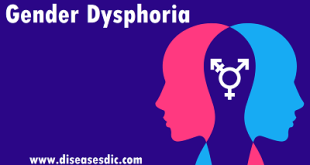What is borderline personality disorder?
Borderline personality disorder is a mental health disorder that impacts the way you think and feel about yourself and others, causing problems functioning in everyday life. It includes self-image issues, difficulty managing emotions and behavior, and a pattern of unstable relationships.
With borderline personality disorder, you have an intense fear of abandonment or instability, and you may have difficulty tolerating being alone. Yet inappropriate anger, impulsiveness and frequent mood swings may push others away, even though you want to have loving and lasting relationships.
Borderline personality disorder usually begins by early adulthood. The condition seems to be worse in young adulthood and may gradually get better with age.
If you have borderline personality disorder, don’t get discouraged. Many people with this disorder get better over time with treatment and can learn to live satisfying lives.
Pathophysiology
Some studies have suggested that patients with BPD might have increased rates of soft neurologic signs, as well as learning disorders, attention-deficit/hyperactivity disorder (ADHD), and abnormal electroencephalographic (EEG) findings. Reports also indicate that adults with BPD have increased impulsivity, cognitive inflexibility, and poor self-monitoring and perseveration, which may be indicators of frontal lobe dysfunction.
The pathogenesis of BPD, like those of most psychiatric disorders, is likely to include an organic predisposition as well as psychosocial and environmental factors. Some researchers postulate the presence of an underlying affective instability to which the individual responds with maladaptive behaviors.
Causes of borderline personality disorder (BPD)
The causes of BPD are unclear. But as with most conditions, BPD appears to result from a combination of genetic and environmental factors.
Traumatic events that occur during childhood are associated with developing BPD.
Many people with BPD will have experienced parental neglect or physical, sexual or emotional abuse during their childhood.
Risk Factors of borderline personality disorder
The cause of borderline personality disorder is not yet clear, but research suggests that genetics, brain structure and function, and environmental, cultural, and social factors play a role, or may increase the risk for developing borderline personality disorder.
- Family History. People who have a close family member, such as a parent or sibling with the disorder may be at higher risk of developing borderline personality disorder.
- Brain Factors. Studies show that people with borderline personality disorder can have structural and functional changes in the brain especially in the areas that control impulses and emotional regulation. But is it not clear whether these changes are risk factors for the disorder, or caused by the disorder.
- Environmental, Cultural, and Social Factors. Many people with borderline personality disorder report experiencing traumatic life events, such as abuse, abandonment, or adversity during childhood. Others may have been exposed to unstable, invalidating relationships, and hostile conflicts.
Although these factors may increase a person’s risk, it does not mean that the person will develop borderline personality disorder. Likewise, there may be people without these risk factors who will develop borderline personality disorder in their lifetime.
Symptoms of borderline personality disorder
People with BPD experience wide mood swings and can feel a great sense of instability and insecurity. According to the Diagnostic and Statistical Manual diagnostic framework, some key signs and symptoms may include:
- Frantic efforts to avoid real or imagined abandonment by friends and family.
- Unstable personal relationships that alternate between idealization (“I’m so in love!”) and devaluation (“I hate her”). This is also sometimes known as “splitting.”
- Distorted and unstable self-image, which affects moods, values, opinions, goals and relationships.
- Impulsive behaviors that can have dangerous outcomes, such as excessive spending, unsafe sex, reckless driving, or misuse or overuse of substances.
- Self-harming behavior including suicidal threats or attempts.
- Periods of intense depressed mood, irritability or anxiety lasting a few hours to a few days.
- Chronic feelings of boredom or emptiness.
- Inappropriate, intense or uncontrollable anger – often followed by shame and guilt.
- Dissociative feelings – disconnecting from your thoughts or sense of identity or “out of body” type of feelings – and stress-related paranoid thoughts. Severe cases of stress can also lead to brief psychotic episodes.
What are the possible complications of BPD?
BPD may raise your risk of other disorders, such as:
- Depression
- Anxiety disorders
- Eating disorders
- Bipolar disorder
- Substance abuse
Your BPD symptoms can also increase your risk of:
- Work problems
- Relationship problems
- Being in an abusive relationship, as the abused or the abuser
- Sexually transmitted infections
- Self-injury
- Suicide
- Getting in a motor vehicle accident
- Getting in physical fights
- Becoming the victim of violent crimes
Borderline personality disorder (BPD) diagnosis
There is no single test to diagnose borderline personality disorder (BPD). If you think you or someone you know has symptoms of BPD, the first step is to see your doctor.
It may take weeks or months to get a diagnosis. A health professional needs to get to know you properly first.
They will need to do a complete mental health assessment, with questions about the current symptoms, past history such as suicide attempts, medical history, relationships and family background such as childhood trauma.
To be diagnosed for BPD, you need to have at least 5 of the following:
- Frantic efforts to avoid real or imaginary abandonment
- Consistently intense and unstable relationships with other people
- Persistently distorted self-image or sense of self
- At least 2 impulsive behaviours that are potentially self-damaging
- Ongoing self-harming behaviour, suicidal behaviour or threats
- Intense feelings lasting hours to days
- Long-term, chronic feelings of loneliness and emptiness
- Difficulty controlling intense and inappropriate anger
- Feeling disconnected from reality, or having paranoid thoughts
Teenagers may start showing the symptoms of BPD, but to be diagnosed they need to have symptoms that are severe enough to persistently interfere with daily functioning for 1 year or longer. A teenager with BPD symptoms has much more severe and long-lasting symptoms than a typical moody teen.
What are the treatments for BPD?
You and your doctor will decide what treatment to try. The main treatment for borderline personality disorder (BPD) is psychological therapy, also called ‘talking therapy’. This may be one-to-one or in a group. There can be long waiting lists for therapy.
We have listed some types of psychological therapies below. Not all of these will be available on the NHS in your area.
Dialectical Behaviour Therapy (DBT)
DBT is helpful for people with BPD. DBT helps you to build skills to deal with distress. Therapists call this ‘emotional regulation’. DBT can help you learn how to control harmful ways of coping with distress, such as self-harming or using drugs or alcohol.
Mindfulness
The NHS may offer you a place on a mindfulness course. Mindfulness can help you to manage your emotions by focusing on the ‘here and now’. You may also do mindfulness in DBT (see above).
Cognitive Analytical Therapy (CAT)
CAT helps you to understand problems you have in relationships. You and your therapist will work together to understand these patterns and try change them. This may be useful if you ‘switch’ between liking and disliking people who are close to you.
Mentalisation-Based-Therapy (MBT)
This sort of therapy may help you if you make assumptions about what other people think or feel. You may base these assumptions on the worst-case scenario rather than more likely explanations. For example, if someone you care about wants to do something by themselves, you might think they don’t care about you, hate you or they will never want to come back. These feelings might make you panic and feel angry.
Mentalising is about understanding other people’s behaviour and your reaction to it. You do this by thinking about thoughts, intentions, needs and desires. It is about being aware of what’s going on in your own mind. This will help you to try to take a more balanced view about what might be going on in other people’s minds. This kind of therapy might help you if you worry about being abandoned.
Schema therapy
Schema therapy looks at patterns of behaviour and emotional states. You may act in different ways in different situations, and your therapist might call these ‘modes’. The therapy tries to find the right ‘mode’ for you to move forward and deal with situations in the best way you can.
Psychodynamic psychotherapy
This therapy focuses on your unconscious. Your unconscious is the part of your mind that controls beliefs, emotions or behaviours without you thinking about them.
Therapists think that past experiences, especially those in your childhood, can affect your unconscious. The therapist will try to link your current problems to past events. This may help to explain why you feel the way you do.
Therapeutic Communities
Therapeutic communities are not a treatment themselves. They are places you can go to have treatment. They may be specific for certain groups of people. For example, some may be for young women who have problems with alcohol or drugs. They sometimes have a religious link.
You may stay for a few weeks or months, or you may visit for just a few hours a week. You may have group therapy and self-help sessions. There may also be other group activities such as gardening and help with daily living skills.
Therapeutic communities vary a lot because they are often run by the people who use them and they shape them based on what they want.
Medication
There is no medication to treat borderline personality disorder (BPD). But your doctor may give you medication if you have another mental illness like anxiety or depression as well as BPD. They may offer you medication in a crisis, but this isn’t helpful as a long-term treatment.
How to prevent borderline personality disorder?
Since the exact causes of BPD are still largely unknown, there is no exact formula for avoiding the disorder completely. There are, however, things you can do that may help, including:
- Validating emotions
- Keeping stable schedules
- Being present
- Reinforcing positive behavior
- Being supportive and patient
One of the most successful forms of treatment for BPD is dialectical behavior therapy or DBT. DBT works by helping to validate a person’s feelings while teaching them how to change their behavior patterns and negative thought processes. Children and adolescents who learn that their feelings are valid may have a better chance of not developing the disorder.
 Diseases Treatments Dictionary This is complete solution to read all diseases treatments Which covers Prevention, Causes, Symptoms, Medical Terms, Drugs, Prescription, Natural Remedies with cures and Treatments. Most of the common diseases were listed in names, split with categories.
Diseases Treatments Dictionary This is complete solution to read all diseases treatments Which covers Prevention, Causes, Symptoms, Medical Terms, Drugs, Prescription, Natural Remedies with cures and Treatments. Most of the common diseases were listed in names, split with categories.







